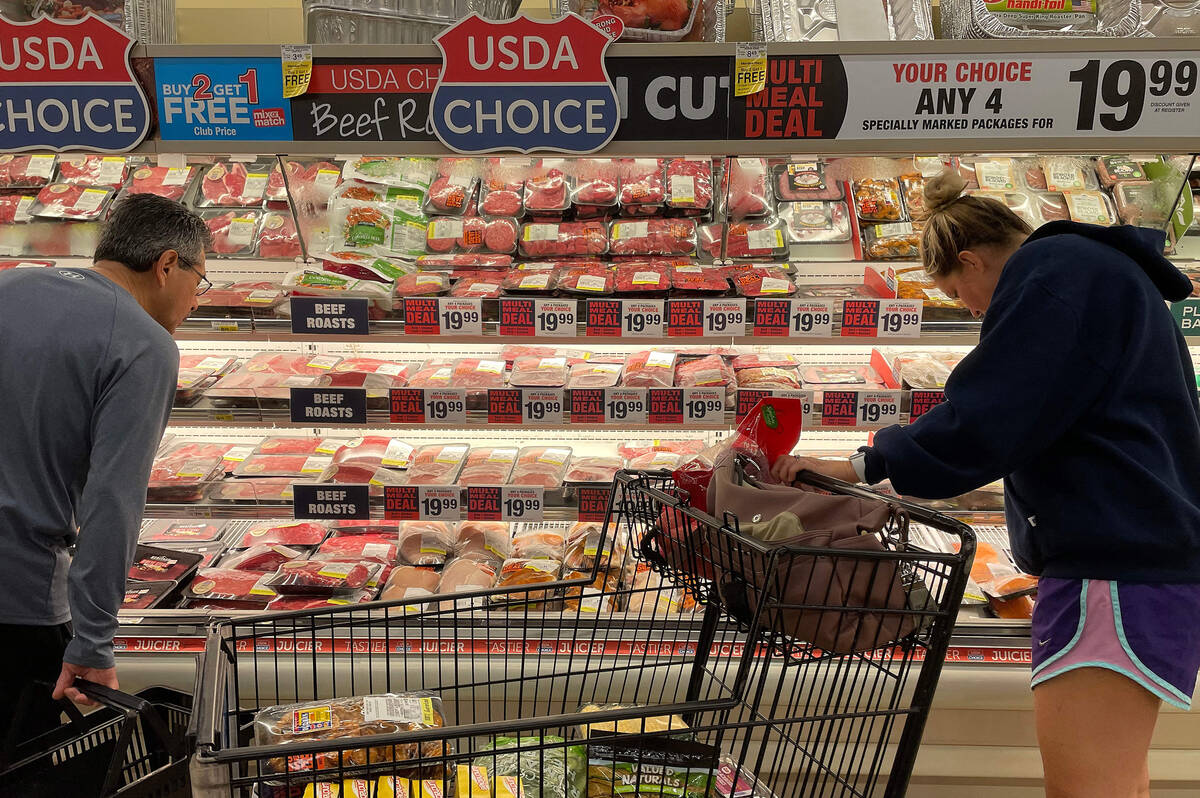Inflation at the grocery store isn’t going away anytime soon. Here’s why.

Sriracha sauce may be in short supply just for a couple of months after a drought in northern Mexico stunted pepper plants.
Tampons may be mostly a social media-manufactured shortage, not the factory kind. Baby formula shortages are painfully real but have nothing to do with backups at the Port of Los Angeles. Peanut butter shelf still empty? It was a regular old-fashioned manufacturer recall by Jif.
Shoppers never thought much about the supply chain until the pandemic disrupted it. Now some are finding it hard to determine what shortages are real and what’s chatter gone awry or made worse by consumers overreacting. And the kinds of shortages that have always been a part of life get conflated and blamed on “supply chain” issues that aren’t resolved.
But there are also new stresses on the supply chain due to Russia’s invasion of Ukraine, and experts say the future losses of that region’s wheat, corn and sunflower crops will continue to translate into higher prices in U.S. grocery stores.
“If there’s suddenly a lot less wheat in the world market, that drives up prices all over the world,” said Texas A&M agriculture economist David Anderson. According to the U.S. Department of Agriculture, through May, Ukraine is the world’s eighth-largest corn producer and has shipped about 90% of its expected corn exports for 2021-22. Ukraine is the world’s ninth-largest wheat producer, and while it has shipped substantially all of its exports through May, its exports for 2022-23 are expected to be down by nearly half.
“We aren’t talking about food shortages in the U.S., but we are talking about higher prices,” Anderson said.
Sunflower oil is a major export from Ukraine but isn’t used as much in the U.S. Ukraine normally produces one-third of the world’s sunflower oil and accounts for nearly half of global exports. In 2022-23, its share of global sunflower oil production and exports is projected to shrink to 21% and 35%, respectively. Top markets in 2021 were India (31 %), the European Union (30%) and China (15%), according to the USDA.
As far as wheat and corn, there’s an annual surplus in the U.S., but prices are still expected to go up. The U.S. is an exporter of both crops, Anderson said, but a domestic abundance doesn’t matter when prices are based on global supplies. Crop commodity prices are similar to oil prices — they’re global.
Anderson explains the impact by walking us through a traditional American supermarket.
The outside walls of the store are filled with refrigerated meat, dairy and eggs cases. Feed is the most expensive part of producing livestock, Anderson said. Hogs and chickens eat corn and soybean meal, which is more expensive because of the war in Ukraine. That pushes up the prices on chicken and pork.
The U.S. is a major importer of fruits and vegetables, mostly from Mexico and to a lesser extent, Canada. Coffee is 100% imported.
In the interior grocery aisles, wheat and corn are found as flour and meal and in various forms such as cornstarch and corn syrup that are in everything from bread and baked goods to canned soup and breakfast cereals.
Anderson said weather, or what he calls “good old mother nature,” will also result in higher food prices. “There’s a time element of crops planted in the spring and harvested in the fall. It’s not like a factory that can be cranked up to respond to higher prices.”
The current drought in western states and North Dakota and Montana is shrinking the supply of durum wheat, which is used to make pasta, and that will result in higher pasta prices, he said. “That’s how markets work.”
Beef prices will also be higher due to weather. The U.S. Department of Agriculture has forecast that 7% less beef will be produced in the U.S. in 2023 because of the droughts’ impact on pastures and hay production.
“Then everything gets put on a truck and moved to a store with higher gasoline prices. That’s going to continue to push grocery prices higher and increase the price of everything we buy,” he said.
Fertilizer prices are up due to supply disruptions caused by sanctions against Russia, he said, and with the unemployment rate at 3.6% nationally and 4.2% in Texas, worker shortages and higher wages will also continue to push up grocery prices.
While inflation at the supermarket is not just due to one thing, there will still be select shortages, and if people hoard toilet paper, he said, they need to know that it takes time to restock shelves.
Empty shelves are also caused by recalls. “We don’t have baby formula because the maker wasn’t producing a safe product. We like those rules,” Anderson said. “Sometimes when the shelves are empty, it’s not just the supply chain. There’s a good reason for it.”